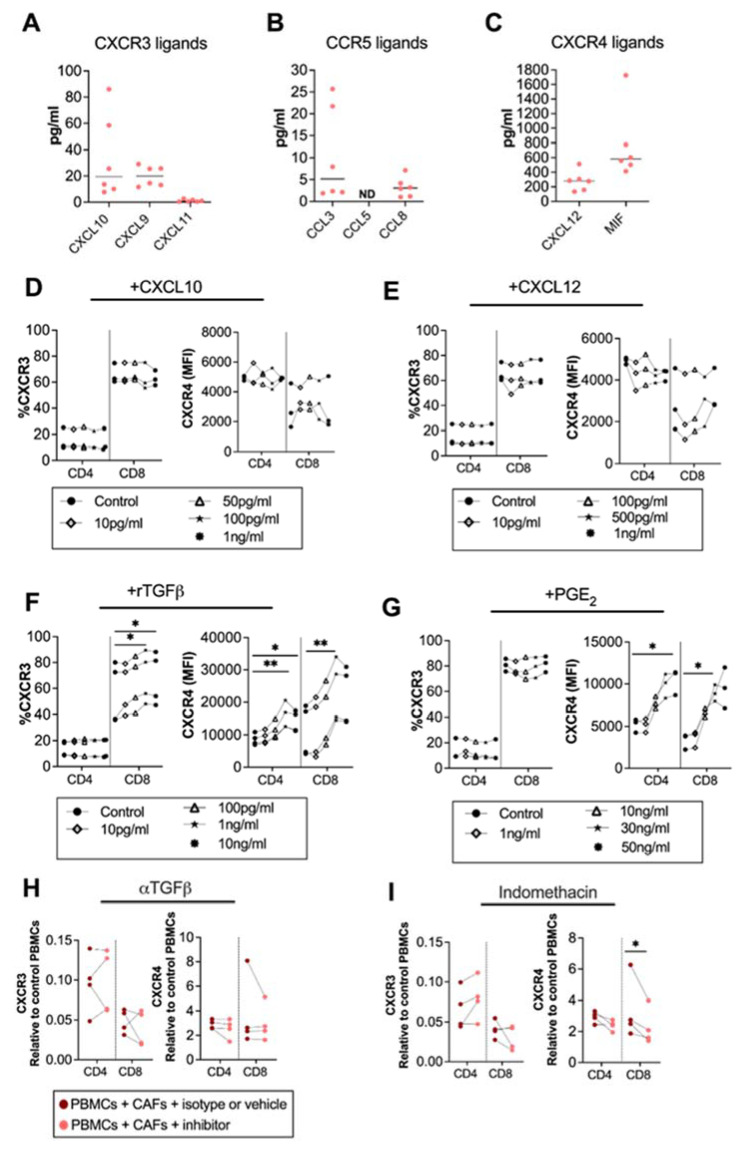Figure 2.
CAF-released CXCL10, CXCL12 and TGF-β are not involved in CAF-mediated modulation of chemokine receptors, but PGE2 partially modulates CXCR4. Levels of (A) CXCL10, CXCL9 and CXCL11; (B) CCL5, CCL3, and CCL8; and (C) CXCL12, and MIF in CAF-conditioned medium (n = 6). (D–G) Frequencies of (left) CXCR3 and (right) CXCR4 expression in CD4+ and CD8+ T cells after adding different concentrations of (D) CXCL10 (10 pg/mL, 50 pg/mL, 100 pg/mL, 1 ng/mL); (E) CXCL12 (10 pg/mL, 100 pg/mL, 500 pg/mL, 1 ng/mL); (F) rTGFβ (10 pg/mL, 100 pg/mL, 1 ng/mL, 10 ng/mL); and (G) rPGE2 (1 ng/mL, 10 ng/mL, 30 ng/mL, 50 ng/mL) to the PBMCs. (H,I) Frequencies of (right) CXCR3, (left) CXCR4 on CD4+ and CD8+ T cells cultured with CAFs after addition of the corresponding isotype, vehicle or the following blocking: (H) 5 μg/mL of anti-TGFβ to block TGF-β and (I) 20 μM of indomethacin to block PGE2. Data are related to those of the control cultures without CAFs. (D–I) Dots and lines show paired samples. (D–G) Friedman’s test and (H,I) a paired t test were used to detect statistically significant differences * p < 0.05, ** p < 0.01.

